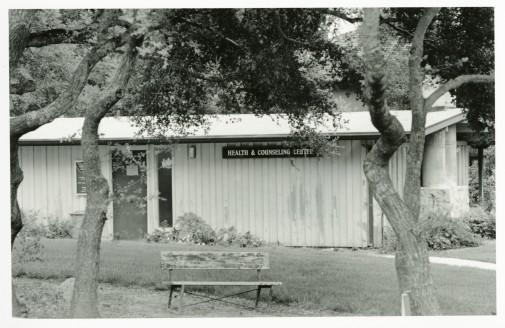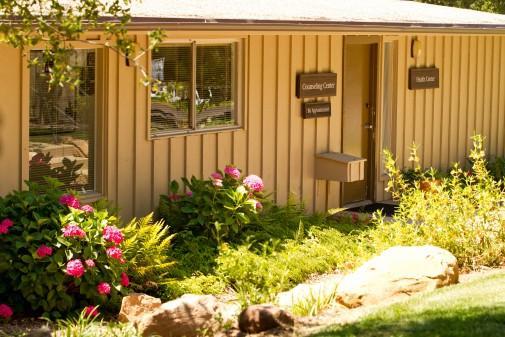Westmont Magazine A History of the Stack House
An undated photo of the Health Center likely from the 1980s |
The Health Center today |
Could you identify the John Stack house on campus? A private residence built in 1958 and named for the original owner, the property caught the attention of college officials in 1966 because of its proximity to Van Kampen Hall and access to Cold Spring Road.
When Westmont acquired the old Deane School campus in 1967, the college completely surrounded the Stack house, and the owners agreed to sell it. Ernest and Gertrude Gieser, who donated the funds for Deborah Clark Halls, purchased it and the Monroe house in 1970 with the understanding that Westmont would manage the property during their lifetimes, and it would revert to the college when they died.
In the absence of immediate plans for the house, students made a suggestion. Wit h Armington and Van Kampen nearby, the residence presented an ideal location for a student union. A student council committee met with Deans Tom Byron and Rosemarie Springer to discuss this possibility. Its “home-like” quality, with three bedrooms, two bathrooms, a living room and a dining room opening to a kitchen, appealed to students, who lived in cinder-block dorm rooms. They envisioned a place where men and women could mingle in an era when men’s and women’s residence halls were separate and closed to members of the opposite sex. With tentative approval from the administration, students began to raise the money to transform the Stack house.
But once established, the student union faltered. Poor management, a lack of funds and an unpredictable schedule threatened its existence. In 1975, Ray Anderson, a religious studies professor, and Greg Monaco, a junior majoring in philosophy, stepped in. When Anderson discovered the student union, also known as the Dew Drop Inn, was closed at noon, he sought to open it to create a “non-institutionalized space” for students to gather. Anderson told the Horizon, “It’s a place to just come down and talk. It will be unofficial, open-ended discussions . . . a combination of theology and sandwiches.” The lunch menu offered a variety of health- food sandwiches and drinks, sold at cost to students. Evening concerts featuring college and local bands proved to be popular with students.
Starting in the summer of 1976, Stack house provided the theater department with a classroom, rehearsal space and storage for props. This change surprised and upset some students when they returned in the fall to find the student union gone. But the administration reaffirmed their decision, and the theater department used the house until 1983. The students set up a coffeehouse in Deane Chapel instead.
The Health Center, located in Porter Center since 1968, moved to the Stack house in 1983. Converted into examination rooms, counseling offices and a quarantine area at the time, the building under went fur t her renovation in 2013 to reconfigure the reception and office areas and improve accessibility. The original charm and homey atmosphere of the former residence continue to create a good environment for the Health and Counseling Centers.

